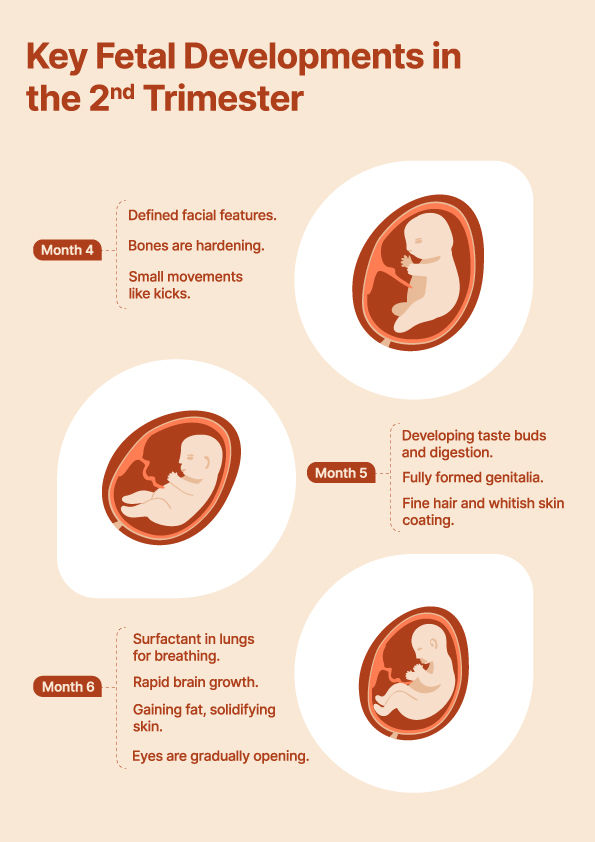As the baby grows, so does the bump! I started noticing physical changes in my body that were both exciting and surprising. Here are some changes you might see too:
Aches, Pains, and Leg Cramps
One thing that stood out in my second trimester was the aches and cramps. My lower back and hips sometimes felt sore, especially by the end of the day. The extra weight and my growing bump put pressure on these areas, making it harder to stay comfortable.
However, taking short breaks, especially after long periods of sitting or standing, helped ease the discomfort. Staying active with gentle stretches, a short walk around the premises and yoga during the second trimester also made a big difference.
Leg cramps often occurred at night, making it tricky to get a good night’s sleep. Stretching before bed or doing light exercise during the day helped reduce these cramps.
This was because staying active improved blood circulation, preventing my muscles from tightening up during the night.
Swelling and Fluid Retention
Swelling in my feet and ankles became more noticeable in my second trimester. Fluid retention, as I learned, is normal as the body holds onto more water for both mum and baby. By evening, my feet would sometimes feel puffy. During my breaks, I started putting my feet up on a pillow, which helped reduce the puffiness. Gentle movement, like a short walk, and drinking enough water helped reduce the swelling and kept my legs feeling lighter.
I changed my footwear. I chose comfortable shoes and socks that would not feel tight or pinched if my feet swelled. You should avoid shoes with tight straps. Whether sitting or standing, simple foot exercises can help improve blood flow, reduce ankle swelling, and prevent calf cramps.
Skin Changes and Stretch Marks
One thing I hadn’t expected was how much my skin would change! My belly started to show stretch marks as my skin stretched to make room for the baby. I also noticed a change in my face; some days, it seemed to have a natural glow, and others, it looked pigmented.
Hormones play a big part in this. Good sunscreen and moisturiser helped me feel more comfortable with the skin changes. It’s all a normal part of the second trimester, and embracing these changes helped me feel more connected to my pregnancy.
Breast Growth and Preparation for Breastfeeding
Breast growth was another change I noticed in the second trimester. My breasts started to feel fuller and heavier in the second trimester. Sometimes they felt tender, but this was a good sign, as it meant my body was preparing for breastfeeding. I noticed little changes like small bumps around the nipples, which my doctor told me was all part of the process.
Choosing comfortable, supportive bras made a huge difference. My doctor reassured me that this was perfectly normal and a sign of a healthy pregnancy. It was a reminder that my body was preparing for everything ahead, including nourishing my baby after birth.
Digestive Changes and Discomfort
While most of the signs of morning sickness were gone, I still faced some digestive discomfort. Heartburn and bloating became regular evening guests, especially after larger meals.
My doctor explained that as the baby grows, it puts pressure on the digestive system, slowing things down. Here are some tips that helped me overcome this discomfort:
- Consume five to six small meals throughout the day instead of three large ones
- Drink plenty of fluids, particularly water, between meals
- Incorporate high-fibre foods such as fruits, vegetables, whole grains, and legumes to promote regular bowel movements
- Steer clear of greasy, spicy, and acidic foods, as well as caffeine and carbonated beverages
- Sit upright while eating to reduce pressure on the stomach and improve digestion
- Avoid eating two to three hours before bedtime
- Incorporate gentle exercises like walking
- Raise the head of your bed or use extra pillows to prevent acid reflux during the night


